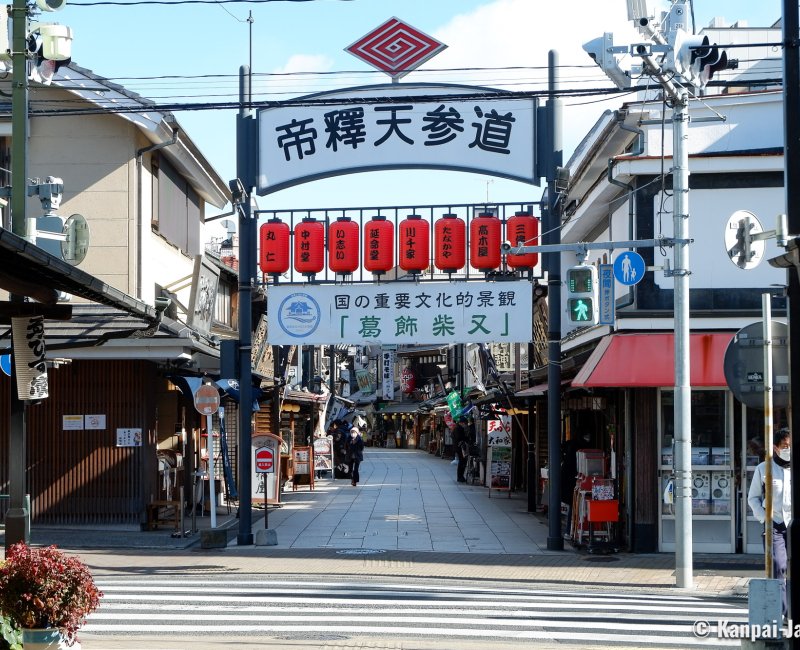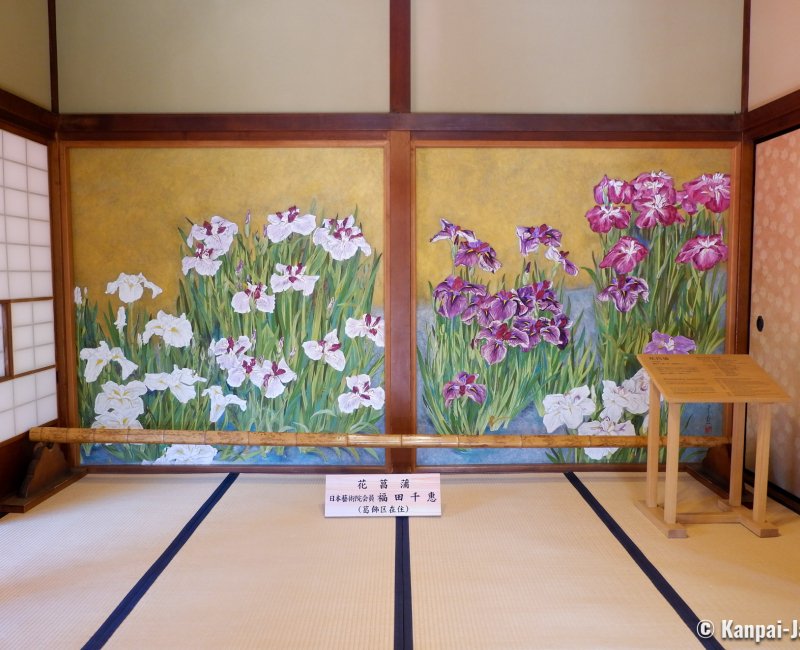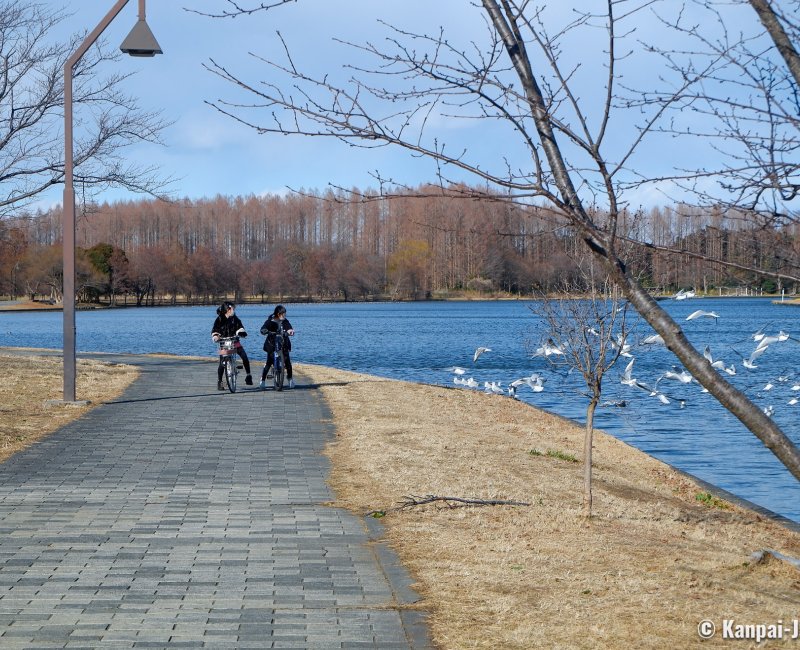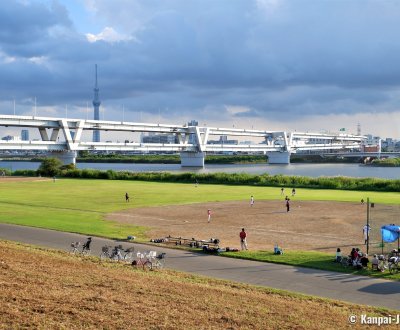Katsushika
Tokyo’s Northeastern Ward
Katsushika is one of Tokyo’s residential wards, located at the north-eastern limit of the Japanese capital, adjacent to Saitama and Chiba prefectures. It used to be part of Edo’s former lower city, then called Shitamachi, surrounded by the water in a rather flat landscape. The main sightseeing interest is Shibamata, its traditional and old-fashioned district.
Adjacent to Saitama and Chiba prefectures, Katsushika ward lies at Tokyo’s north-eastern side. Due to its location far off the Yamanote line and the city center it circles around, this peaceful suburb of the greater Tokyo is not very famous neither popular among tourists. There is indeed no major sightseeing attraction and its flat landscape may seem a bit dull compared to Shinjuku or Shibuya’s skyscrapers. Interestingly, Katsushika is home to the Kosuge prison where Carlos Ghosn served a few months between 2018 and 2019.
Katsushika is crossed by the Ara-kawa, Edo-gawa and Naka-gawa Rivers and was a vast agricultural land of the former Shitamachi lower city during the Edo period (1603 – 1868). It is now more of a pleasant dormitory suburb, with housing estates and small residential districts spreading around the train 🚅 stations.
Three trains lines serve the area:
- In the north, the Joban JR Line connects with Ueno and Nippori (Yanaka) stations;
- In the south, the Sobu JR Line, connects Chiba prefecture to Tokyo Station; and,
- At the center, the Keisei network is the most convenient as:
- It connects to the Tokyo Skytree (Oshiage);
- It offers direct trains to Narita (Takasago) and Haneda airports (via the Keikyu Line); and,
- It serves Shibamata, the main sightseeing destination in Katsushika ward.

Shibamata traditional neighborhood
Located in the east, Shibamata is the beautiful old-fashioned district of Katsushika, that remained close to its original condition of the Taisho era (1912 – 1926) and offers Tokyo visitors a few hours getaway in the olden days.
From the station exit, the Sando merchant street is lined with local crafts shops and typical restaurants up to Taishakuten temple. There, you’ll find the sacred pine tree Ryo-no-matsu and pavilions displaying beautiful wood carvings on their facades.
At the Yamamoto-tei House, take a moment for contemplation and enjoy a matcha tea while admiring the Japanese garden. Then, the quaint Tora-san Museum pays tribute to the longest and most popular movies series in Japan, Otoko wa tsurai yo ("It's Tough Being a Man") by Yoji Yamada. Lastly, you’ll walk to the banks of the Edo-gowa, to find the traditional Yagiri-no-watashi old "ferry ⛴️", which is in fact a wooden boat only operating on weekends and in summer.

Lively river banks in summer
Summer is arguably the best season to enjoy the 2 large rivers limiting Katsushika:
- Ara-kawa is a natural boundary in the west with Sumida ward; and,
- Edo-gawa is the limit between Tokyo and Chiba prefecture in the east.
In early June, the blooming of the iris, the official flower of the ward, attracts many visitors in the 2 aquatic gardens celebrating the Katsushika Shobu Matsuri festival, namely:
- The traditional Horikiri Shobu-en garden on the side of the Ara-kawa river; and,
- The iris garden in the large Mizumoto Park, also renowned for its meta-sequoia forest’s vibrant colors in autumn.

At the end of July, people gather on the bank of the Edo-gawa river, in Shibamata district, for the Katsushika Noryo Fireworks 🎆 Festival, one of Tokyo’s biggest fireworks.
The rivers’ banks are enjoyed by the locals all year round, and are laid out for sports and open-air leisure activities. You’ll find several kilometers long bicycle paths allowing a safe bike 🚲 ride as well as a track for running. On the sides, you’ll see young people training on the many baseball and soccer fields.
The urban side of the ward appears in the successive bridges crossing the rivers, as well as with the aerial freeways leading to the capital. Standing in the background, the Tokyo SkyTree tower is like a lighthouse pointing at the center of Tokyo.

Several small pilgrimages for manga and anime fans
Several Japanese authors and artists were born in Katsushika and contributed to its cultural attractiveness. The most impassioned travelers can walk the ward for the following seichi junrei pilgrimages:
- Captain Tsubasa, Yoichi Takahashi’s soccer manga: 9 bronze statues of its characters are scattered between Yotsugi and Tateishi stations;
- The statue of policeman Ryotsu Kankichi (alias Ryo-san) standing at the exit of Kameari JR station. He is the main character of the manga KochiKame (Kochira Katsushika-ku Kameari Koen Mae Hashutsujo), as its author Osamu Akimoto is from this neighborhood; and,
- Several hints to Monchhichi, the 1980’s children’s favorite monkey 🐒 plush toy, are to be found around Shinkoiwa on the Sobu JR Line, where its maker the Sekiguchi Co., has settled its headquarters in the 1970s.
Katsushika is also the place where the famous ukiyo-e etching artist Hokusai (1760 - 1849) was born at the end of the Edo period. A museum dedicated to the artist was built nearby, in the Ryogoku area near the Sumida River.


